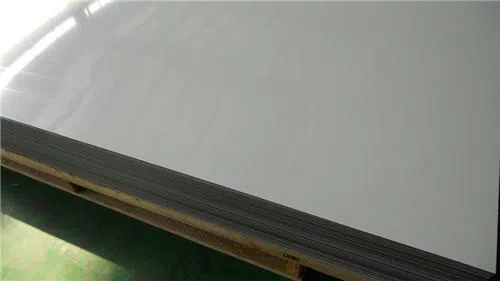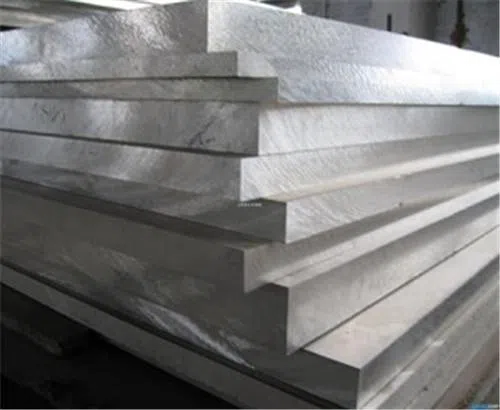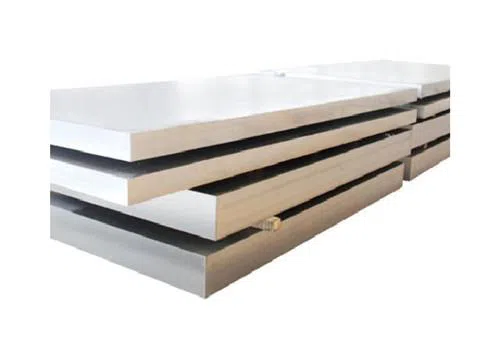Aluminum is used in hulls, deckhouses, and hatch covers of commercial ships, as well as in equipment items, such as ladders, railings, gratings, windows, and doors. The major incentive for employing aluminum is its weight saving compared to steel. Because it is common practice to use weldable aluminum alloys having strengths approaching or comparable to mild steel, equal-strength structures can be designed to a weight saving of 55 to 67%. However, to compensate for the lower modulus of elasticity of aluminum and to conform to normal deflection limitations, a somewhat lower, but substantial, reduction in weight is usually obtained.
The principal advantages of weight saving in many types of marine vessels are to increase payload, to expand capacity for equipment, and to decrease the power required. With other types of vessels, the chief benefit is to permit better distribution of the weight, improving stability and facilitating efficient hull design. The use of aluminum normally results in initial cost premiums that are justified over the life of the application by the benefits of lightweight and low maintenance cost.
The weight saving achieved depends on the approach to design, which varies with different applications. Where known or rule loadings exist for specific structures, normal design principles are applied along with consideration of the mechanical properties of specific alloys.

Alloys. The 5xxx series alloys used for the majority of commercial marine applications have weld yield strengths of 100 to 200 MPa. These aluminum-magnesium alloys retain good weld ductility without postweld heat treatment, and they can be fabricated with normal shipyard techniques and equipment. The weldable aluminum-magnesium-zinc alloys are also receiving attention in this field. The corrosion resistance of the 5xxx series alloys is another major factor in the selection of aluminum for marine applications. Tensile strength reductions in 10-year sea-water corrosion tests of 1.62mm (0.064-in.)-thick bare sheet specimens are only 2 to 5%. The 6xxx series alloys, widely used for pleasure boats, show a 5 to 7% decrease in similar tests.
Alclad aluminum alloys are seldom required in construction of marine vessels. They are used, however, in a few applications, such as piping, for maximum assurance against excessive depth of pitting. Also, alclad 2xxx and 7xxx series alloys are selected where tensile strengths of 70,000 to 80,000 psi (482.6-551.2 MPa) are required, considerably higher than now available in the 5xxx series alloys.
The high-strength alloys are employed where welding is not required, and where their higher strengths can be used to advantage. Because of their lower resistance to corrosion by sea water, protective measures such as cladding, painting, or cathodic protection must be used for satisfactory life in marine service.
Pleasure Boats
The use of small boats has expanded rapidly since 1945. Early applications of aluminum were mainly in canoes and small fishing boats, in which aluminum is now the dominant material.
Small Craft. Runabouts and small outboard cruisers up to 20 ft (6 m) long generally are constructed either of aluminum or plastic. Styling often is more important than engineering superiority in these consumer products. However, only recently have builders emphasized styling in aluminum boats.
Light weight is advantageous, in that it reduces construction costs, allows a boat to be driven with less power, and provides portability. Furthermore, many accidents that would have caused fractures and extensive damage in wood or plastic boats result only in repairable dents with aluminum. Also, aluminum boats are damaged less than steel boats in service experience to date (even though aluminum plating and steel plating are usually of the same thickness), because the lower modulus of elasticity of aluminum results in a larger capacity to absorb energy. For both aluminum sheet and steel sheet, thickness is selected mostly on the basis of weldability, for which the requirements are the same for the two metals.
The practical minimum thickness of aluminum parts for repair welding is considered to be 0.090 in. Although lighter gages (common in small-boat construction) can be welded, usually they are repaired at perforated locations by riveting sheet patches in place. Dents are hammered smooth, as in automobile body repair.
Low maintenance reduces the cost of operating a rental boat service, and it is also an advantage with private pleasure craft, which are carefully maintained for appearance. Most aluminum boats are sold painted for fresh-water or salt-water service. For operation in fresh water, aluminum boats are commonly left unpainted for 10 years or more, whereas wood boats require annual caulking and painting. For salt-water service, the typical practice with aluminum is an annual touch-up plus repainting every three or four years.
Aluminum is used for boat trim and accessories, regardless of hull material. Anodized bright trim, either as extrusions or roll-formed sheet products, is widely used in boats of all types for rub rails, dash panels, and other parts.
Small boats are fabricated from a wide range of aluminum sheet alloys, mainly in the 5xxx and 6xxx series. These have an optimum combination of strength, cost, ease of fabrication, and corrosion resistance. Generally, 5052-H32, 5052-H34, or 6061-T6 is used for small hulls that need no stretch forming. Where stretch forming is employed, 6061-T4 sheet, which may be subsequently artificially aged to the T6 temper, is utilized. Extrusions of 6061 or 6063 are used for structural and decorative sections, such as keels, chines, gunwales, and spray rails.
Rivets of 2117, 6053, or 6061 are recommended. Generally, a rivet should be neither much harder nor appreciably softer than the sheet to be joined, and it should have similar mechanical properties.
Larger inboard boats, 20 to 125 ft (6 to 38 m) long, are fabricated of aluminum alloys for reasons similar to those for small craft. Normally, these boats employ welded construction for hull, interior structure, and cabins, The most popular alloy for hulls is 5086-H32, in thicknesses of 0.45 to 12.7 mm. Bulkheads, fuel tanks, and cabins are usually of the same alloy as the hull, although 5052 or 6061 can be utilized. Structural members, either in special extrusions or standard structural shapes, can be of 6061-T6 or 5086-H112 in all-welded construction.
Sailing craft follow a pattern similar to that for power craft; the smaller boats using riveted construction of 5052 or 6061 alloy, and larger custom yachts using all-welded construction in 5086. The light weight of aluminum hulls in sailing craft allows the designer wide latitude in providing balance between sail area and ballast-displacement ratio. A study of hull weights for wood, glass-reinforced plastic, and aluminum in a 30-ft Naval Academy yawl showed that plastic was 10% and wood 37% heavier than aluminum. The currently standard plastic yawls have a ballast-displacement ratio of 0.433, compared to 0.390 for the older wood design. Aluminum construction would permit a ratio of approximately 0.47.
Commercial Small Craft
Personnel and work boat construction has accelerated with the expansion of the offshore oil industry since World War II. Initially, steel was established as the standard construction material for these craft, and it was not until the middle 1950's that the first aluminum personnel boat went into service. This all-welded 6061-T6 boat quickly demonstrated the advantages of lighter hull weight, resulting in higher speed for the same horsepower. As time saved in transportation of personnel to the rigs offers significant wage savings, the industry rapidly adopted these craft.
Crew boats are normally of hard-chine, planing-hull type, using developable surfaces in the hull form. This results in an efficient hull that is economical to fabricate. The builder also benefits from the lighter weight of the material being lifted into place, since fewer workers and pieces of hoisting equipment are required. One builder of personnel boats has shown that a 50-ft aluminum hull requires a fabrication time 33% less that for steel.
The majority of aluminum personnel boats are fabricated of 5456-H321 sheet and plate 0.188 to 0.375 in. thick, and 5456-Hlll or 6061-T6 extruded shapes. Alloy 5086 is also widely used for hull plating. Cabins are normally of 5052 sheet 0.125 to 0.25 in. thick, and 6061 extrusions.
Fishing Vessels. In these craft, the weight-saving and corrosion-resistance economies of aluminum have proven to exceed the initial investment premium. Following a short service test in 1957 of two 36-ft welded aluminum purse seine boats built of 0.25-in.-thick 5052-H32 plate and 6061-T6 shapes, an entire fleet was changed to aluminum. The original advantage attributed to aluminum was the weight saving, which was used to compensate for additional net-handling gear while retaining adequate stability. After four years of abuse of the boats in this rugged service, the owners were convinced that aluminum boats also had lower maintenance costs.
A 57-ft Alaskan fishing boat constructed of 0.25-in.-thick 5086-H32 plate attained a loaded speed of 18 knots, more than double that of conventional boats. This resulted in extra $5000 to $10,000 earnings per year, since more time could be spent at the fishing grounds. The craft is unpainted; maintenance savings are estimated at $2000 per year. The increased earnings and the maintenance savings quickly justified the 15% initial cost premium.
Similar savings were reported for 70 gill-netters with welded 5086-H32 0.25-in. hull plating, operating in the Pacific Northwest. These 36-ft craft earn 30% more in a normal season than the standard wood-hull gill-netters they replaced.

Equipment aboard fishing vessels is often aluminum. The aluminum fishroom, common in Europe, is used in some vessels in the United States. Extruded or roll-formed aluminum hold sections in 6061-T6 or 6063-T6 result in fishroom systems that are nonabsorptive, sanitary, and easily rearranged by the crew. Fish spoilage is reduced and more fish can be carried, as the aluminum sections are less than one third the weight of wet-wood fish or pen boards (portable boards for dividing the hold into small compartments).
Refrigerated fish tanks of unprotected 5052 or 6061 sheet and plate 5.0 to1.5 mm thick have proven more sanitary and less expensive to maintain than coated or treated steel tanks. With brine as the normal coolant, steel tanks require the protection of organic or metallic coatings to achieve useful service life; in addition, coating maintenance is a continuous problem.
Government survey boats with aluminum hulls normally carry more surveying equipment than the conventional steel boats, although some use the weight saving to expand shallow-draft operations. Both state and federal government agencies operate these aluminum boats. The survey boats are fabricated by the builders of personnel boats, and they are made with similar alloys and construction practice.
Commercial Ships
Passenger vessels utilize large quantities of aluminum in superstructures and equipment. The 4.5 million pounds (2000 metric tons) in the "SS United States", built in 1952, resulted in an 8000-ton decrease in displacement. The lighter topside weight permitted a beam reduction, saving hull weight and allowing reduced power capacity, while still providing the high service speeds necessary on modern ocean liners. Riveted 6061-T6 plate was employed for the deckhouse structure, superstructure decks, and bulk- heads. The remainder of the aluminum was utilized in furniture, equipment, ventilation ducts, ladders, stair treads, and railings.
Major European-built liners have used aluminum extensively in superstructures and equipment, ranging from 1000 to 2000 tons per ship. The "Oriana", "Canberra", and "France" employed welded construction, using sheet, plate and extrusions of aluminum-magnesium and aluminum-magnesium-manganese alloys. Since appearance is important in this class of ship, the structures are painted; aluminum allows at least 50% longer time until repainting is required.
Dry cargo ships have been affected by new design trends that emphasize a need for lower topside weight. Heavier cargo handling gear and related machinery, and more narrow, hydrodynamically contoured, high-speed hulls have increased stability problems. Thus, weight saving is required to permit more efficient hull designs. Approximately 100 tons of welded 5086 plate and shapes 0.25 to 0.75 in. thick was used in the midship structures in each of ten ships built recently. Aluminum structures normally weigh only 40% as much as steel structures, using construction details similar to steel practice (welded plate and stiffeners bracketed at the decks). In some instances, additional weight is saved by application of special extrusions.
Bulk carriers normally can take direct advantage of any weight saving by carrying additional cargo. Six Canadian ore carriers utilized 150 to 250 tons aluminum in deckhouse structures, hatch covers, and equipment such as railings and lifeboats. Aluminum booms of riveted 2014-T6, 6061-T6, or 6070-T6 extruded or rolled shapes on self-unloading ore carriers enable operators to achieve economies in converting older ships to update their usefulness. In a typical installation, a 190-ft steel boom on the "J. R. Sensibar" was replaced with a 256-ft aluminum boom, increasing the dockside unloading area available to the ship without having to alter the existing boom support structure.
Passenger ferries use aluminum superstructures to maintain safe stability while carrying more passengers. In 1939, New York City’s Staten Island ferries initiated this application of aluminum with three riveted superstructures, involving a total of 100 tons of 6061-T6 plates and shapes. This resulted in a reduction in fuel consumption of 220 gal per round trip for each ferry and an annual operating cost that was $107,000 less than for a similar ferry with an all-steel superstructure. Latter group of three ships, built in 1964, used 100 tons of welded 5086 plates and extrusions for the topside structure. Smaller ferries in operation off the Pacific Coast and in the St. Lawrence River have hulls of welded 5086-H32 plate, 3/16 or 1/4 in. thick.
Barges. Aluminum barges, carrying various chemical products, have been operated on the American inland waterway system since 1960. A 5200-bbl barge is 97 ft long, 35 ft wide and operates at an 8.5-ft draft. A 9000-bbl barge is 100 ft long, 50 ft wide, and carries 1200 short tons at an 8.5-ft draft. The aluminum barges have 7/16 in. -thick welded 5086-H34 hull plating; the cargo tanks are 5/16-in. 5052-H34 plate. Approximately 120 short tons of aluminum were used in constructing the 100-ft barge, resulting in a weight saving of 150 tons compared to a similar steel barge. This permitted 15% more cargo to be carried, but the corrosion resistance of the aluminum alloys employed in tanks, piping, and hull was the major factor in selection of aluminum for these chemical barges.
These barges have also been used to move such commodities as lubricating oils, fuels, nitrogen fertilizers, petroleum solvents, and glycols. Inspections by the United States Coast Guard, the American Bureau of Shipping, and the owners have shown virtually no corrosion of the aluminum structure or structural damage from handling in river tows.
A larger aluminum barge, 195 by 50 ft, was built in 1963. All-welded 5083 plate 5/16 to 9/16 in. thick and structural shapes were used to fabricate this barge. It carries acetic anhydride, although classed for a range of other chemical products also. The rated capacity is 2264 short tons at an 8.5-ft draft. This capacity is approximately 14% more than a stainless-clad tank barge of the same size; hull weight of the aluminum barge is only 200 short tons, compared to 486 tons for steel construction.
Hydrofoils. These high-speed craft are used for commuter and excursion service. Although their use in Europe has been an economic reality for decades, the availability of competing forms of transportation has restricted application in the US. Early European applications dictated minimum hull weight to utilize practical power sources. This led to the exclusive use of a 6061-type alloy and riveted construction for the hull, cabin, and bulkheads. Craft built recently in the United States have employed welded construction with the 5xxx series alloys.
The 90-ton, 105-ft-long hydrofoil "H.S. Denison" was built in 1961 for the Maritime Administration. A combination of riveting and welding was used in fabricating the hull, cabin, and bulkheads of 5456 sheet, plate, and extrusions. Alloy 7079-T6 forgings formed part of the steel foil structure. Piping systems were of aluminum or plastics, following aircraft practice.
Smaller hydrofoil craft have also been constructed of aluminum. Two 45-ft-long craft of welded 5456 were built, with 10 more planned for similar construction. Welded 5086 sheet, plate, and extrusions were used to build the 34-ft "Albatross", which can carry 24 passengers at speeds up to 40 mph.
Aluminum is not only the accepted material for hydrofoil hull structure, but is used also in small foil systems in the form of alloy 356-T6 castings and 6061-T6 extrusions. However, in large craft, such as the "Denison" and the Navy’s PCB and AGEH (discussed in the next section), high-strength steels are employed for the foil structures. Although many questions remain concerning the relative importance of the various factors in material selection, it has been established that the strength and stiffness provided by the high-yield-strength steels (150,000 to 200,000 psi) are necessary in the large craft.

Naval Vessels
Destroyers. About 6000 tons of aluminum per year, more than any other type of marine application, is used on destroyers. During the 1930’s, extensive application of aluminum in destroyers was developed, and design practices were refined. During World War II, construction reverted to steel because of the shortage of aluminum. Following the war, with growing emphasis on electronic equipment, deckhouse structure weight became a critical factor, and aluminum was reinstated to combat this problem.
Alloy development in the past decade has resulted in an almost standard application of 5456 plate and extrusions in the welded deckhouse structures of destroyers. Quantities now used range from 100 to 350 tons per ship, depending on the type of destroyer. The weight savings in the aluminum deckhouse structure, normally about 40 to 45%, are utilized to maintain sufficient ship stability while employing the narrow hull necessary for high service speeds. Additional equipment installations also are permitted topside.
Over half the aluminum used is in the deckhouse structure, the remainder being employed in a variety of equipment applications. These include lockers, desks, chairs, ’bunks, doors, windows, ladders, gratings, and galley equipment: A wide range of the more corrosion-resistant wrought and cast alloys is found in these items, including 5052, 5086, 6061 and 356.
Aircraft Carriers. Aluminum applications totaled over 1750 tons on the carrier "Enterprise" (CVA-65) completed in 1961. The largest single item (8) was the four deck-edge elevators. The first such elevator platforms, employing welded 6061-T6 members in a tubular-truss structure, had been installed on the carrier "Shangri-La" (CVA-38). Later, alloy 5154-H36 was used for the welded elevators on CVA-61. Alloy and welding developments led to application of alloy 5456 plate and extrusions in the elevators on the "Enterprise". These were designed with an open grillwork structure; the deep girders were fabricated from 3/4 to 2 in. thick. The 52 by 85-ft structures weighted 105 tons each, 35 tons less than similar steel units. Reduced inertia, during operation between the flight and hangar decks, permitted reductions in operating machinery.
The "America" (CVA-66), completed in 1965, employs elevators of stiffened-plate configuration, using high-strength steels; they weighed 115 tons each. A similar design but employing alloy 5456 resulted in aluminum being specified for the elevators on carrier CVA-67, now under construction, at a weight reduction of 15 tons each.
Other uses included the items of equipment mentioned for destroyers, along with radar masts, superstructure, cooling panels in the flight deck, and comparable structures.




QR Code
